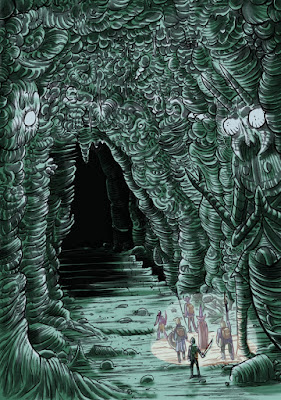I originally wrote this post in 2014, so it's probably time to check back in and see how the rpg landscape is changed. There are a number of genres/subgenres that are under-utilized or not utilized at all in rpgs, despite the fact they would probably work pretty well. Here are a few off the top of my head:
Humorous Adventure Pulp
Basically this would cover the whimsical, fantastical, and often violent world of Thimble Theatre (later Popeye) and the Fleischer Popeye cartoon. A lot of fist-fights, fewer guns. This would also cover Little Orphan Annie, various kid gang comics, and (on the more violent end) Dick Tracy.
Update: Still nothing. It's probably not a genre that has a lot of cachet for modern audiences.
Wainscot Fantasy
Little creatures hiding in the big world. Think The Borrowers, The Littles, and Fraggle Rock.
Update: I've found forums and blogposts where others are asking about this sort of thing, but no games still. Well, no published games. There's a quick and lite Fraggle Rock game here.
Kid Mystery Solvers
Scooby Doo is probably the most well-known example, but you've got several Hanna-Barbera returns to the same concept. Ditch weird pet/side kick, and you've got The Three Investigators, Nancy Drew, and the Hardy Boys.
Update: Looks like there is a game called Meddling Kids. I don't know anything about it though.
Wacky Races
I've written about this one before--and Richard has run it. Still needs a game, though.
Update: There is a board game, which perhaps is a better fit for it.
15 hours ago




.jpg)

















